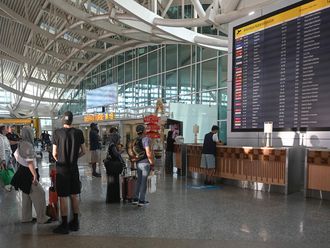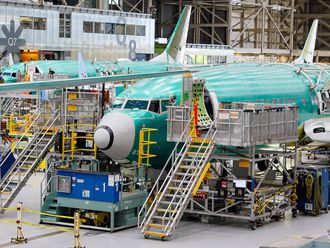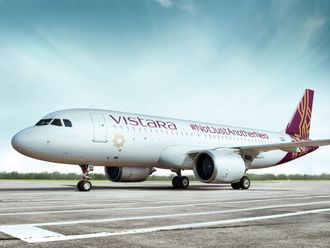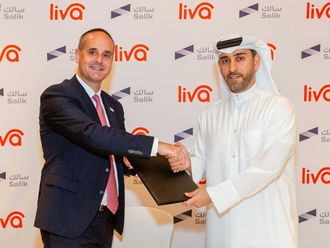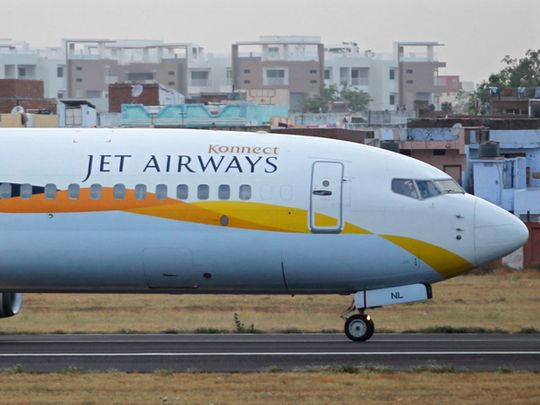
Dubai: Jet Airways, once India’s largest private carrier, might see the skies again after the company’s creditors approved a deal to revive the grounded airline. The company declared bankruptcy last year with $1.2 billion in debt.
In October, the final resolution plans submitted by two interested buyers were put for e-voting for approval by Jet Airways’ Committee of Creditors (COCs). On Saturday, the plan submitted by UAE-based businessman Murari Lal Jalan and Florian Fritsch, founded of UK-based Kalrock Capital, was approved by the creditors.
Reuters, citing a source close to the matter, reported that the new owners had agreed to pump in 10 billion rupees ($136 million) as working capital for the revival of the airline. Another 10 billion rupees will be given to creditors over a period of five years. Financial creditors of the airline will also get 10 per cent stake in the company, the source said.
Who is Murari Lal Jalan?
Despite the highly publicized takeover of one of India’s best known brands, little is known about Jalan. His company, MJ Developers, is based in Dubai and has a diversified portfolio ranging from real estate development to construction equipment leasing.
Through his various investments and real-estate projects, Jalan is one of the biggest foreign investors in Uzbekistan by size, according to the company’s website. MJ Developers’ portfolio in the Central Asian country includes a four-star luxury 200 room hotel in the historic city of Bukhara.
What does this deal mean?
Jet Airways may have been thrown a new lease of life, but its future remains unclear. The airline’s domestic slots have been leased to other competitors like SpiceJet, while most of its slots for international services have been removed or sold.
Therefore, it still remains unclear how many routes Jet Airways can resume if it does restart flights - especially during the pandemic.
But one thing is clear, trying to beat the budget airlines at their own game would be a fatal mistake. “They should look for opportunities in the medium- and long-haul sector instead of directly competing with the LCCs,” said Linus Bauer, Managing Director at Bauer Aviation Advisory.
“We are entering another era where airline partnerships are becoming more essential to emerge stronger from the current crisis, thus Jet Airways needs to look for strategic partner airlines - the large domestic market in India is one of the key advantages for Jet Airways since domestic markets recover first from the pandemic,” Bauer added.
Turning around Jet Airways could be a commitment of more than 5 years for Jalan and Kalrock. “The other consortium had no plans to infuse funds into Jet Airways. In current times when the aviation business is hit so badly from COVID-19, the proposal from the other bidder was not attractive. However, both bids are very close to the liquidation value. Thus, time will tell us more about the progress. There is a lot of work to be done in the restructuring process of Jet Airways,” said Bauer.
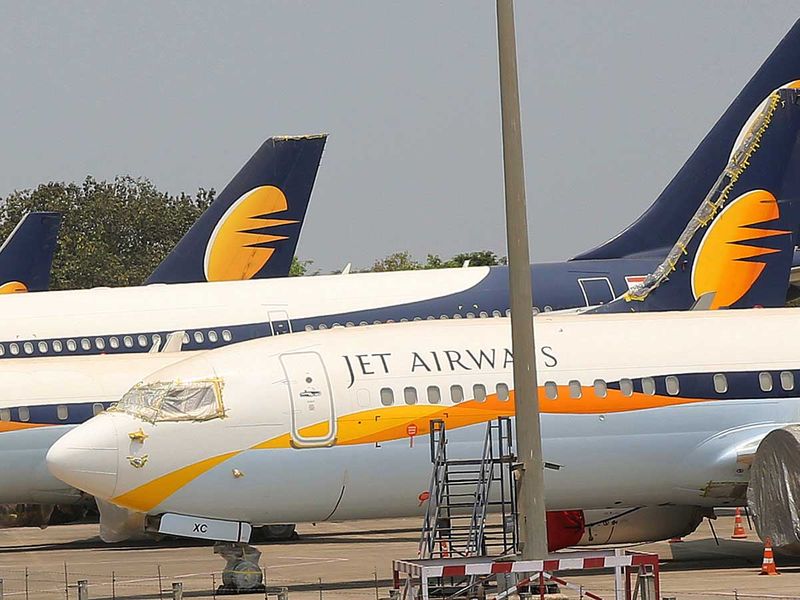
The rise
Founded in 1992, a year after India’s economy was liberalized, the company was in a good position to take advantage of a country on the cusp of unprecedented economic growth, along with a burgeoning middle class.
Jet, which was funded by a private-public split between Naresh Goyal, Gulf Air and Kuwait Airways, quickly expanded their fleet in the mid-90s, placing airplane orders one after another worth hundreds of millions of dollars and eventually scooping up 20 percent of the market share (mostly at the expense of then market leader Indian Airlines).
Following a government directive that barred foreign investment in domestic carriers, Goyal bought up the rest of the 40 per cent from the Gulf-based airlines and became the sole owner of the company. Jet Airways got a major boost in 2003 when the airline and its peers got government authorization to fly international routes.
There was no looking back after that.
To fund the upcoming expansion, Jet listed itself on the Bombay Stock Exchange (BSE), offering a 20 per cent stake to potential investors. The move, which turned its founder Naresh Goyal into an overnight billionaire, set the stage for Jet’s market dominance, which became even more apparent after its $500 million takeover of rival Air Sahara.
When the government began allowing foreign investment in Indian carriers, Jet opportunistically divested a 26 per cent stake to Abu Dhabi’s Etihad Group.
The fall
In the late 2000s, budget carriers like Spicejet and Indigo began pulling more passengers with their low fares. In a price war for dominance, Jet – designed to be a premium carrier – lost out after continuously dipping into its cash reserves and accruing more than $1 billion in debt.
_resources1_16a4505ec69_original-ratio.jpg)
By 2018 end, Jet had posted back to back quarters of losses, with money owed to financial lenders, and aircraft leasing firms, among other parties. Last year in March, Goyal sold off his 51 per cent stake in the struggling airline; a few months down the line Jet, once India’s largest airline, suspended its operations after a final domestic flight.


